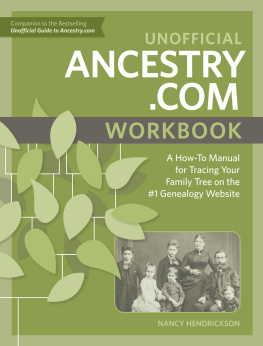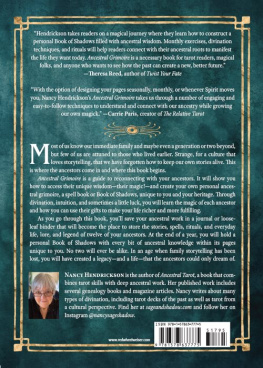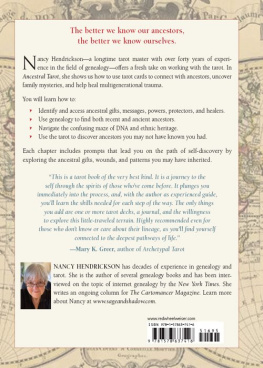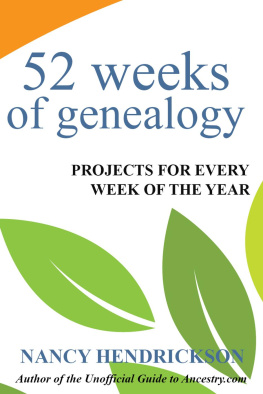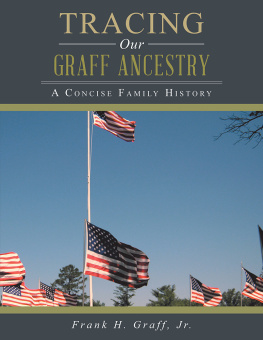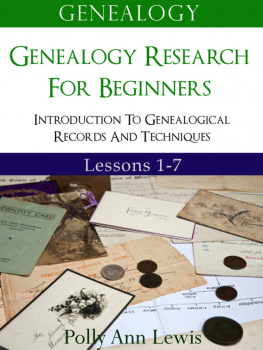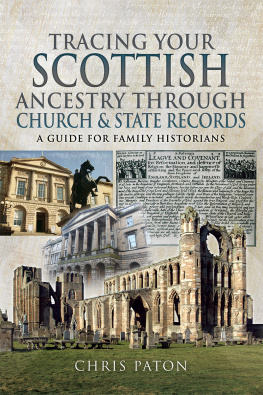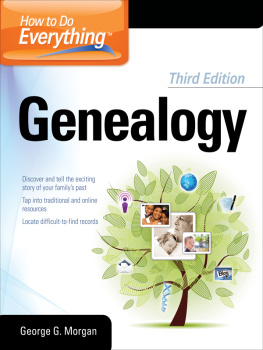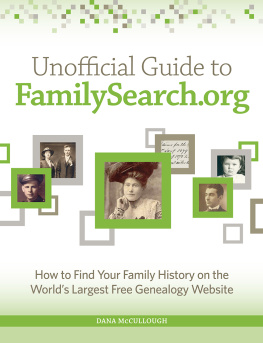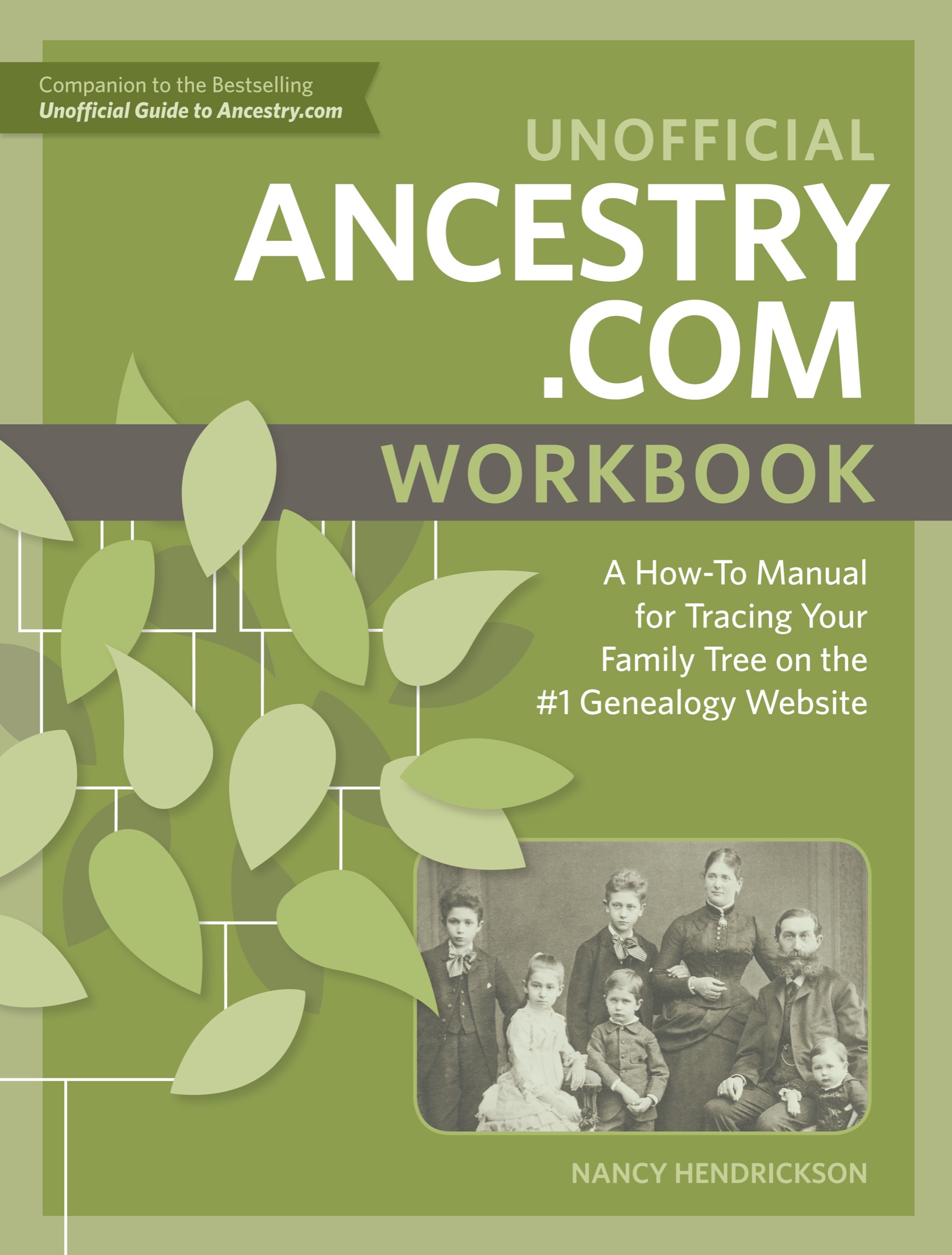Contents
Guide
UNOFFICIAL ANCESTRY.COM WORKBOOK
A How-To Manual for Tracing Your Family Tree on the #1 Genealogy Website
NANCY HENDRICKSON
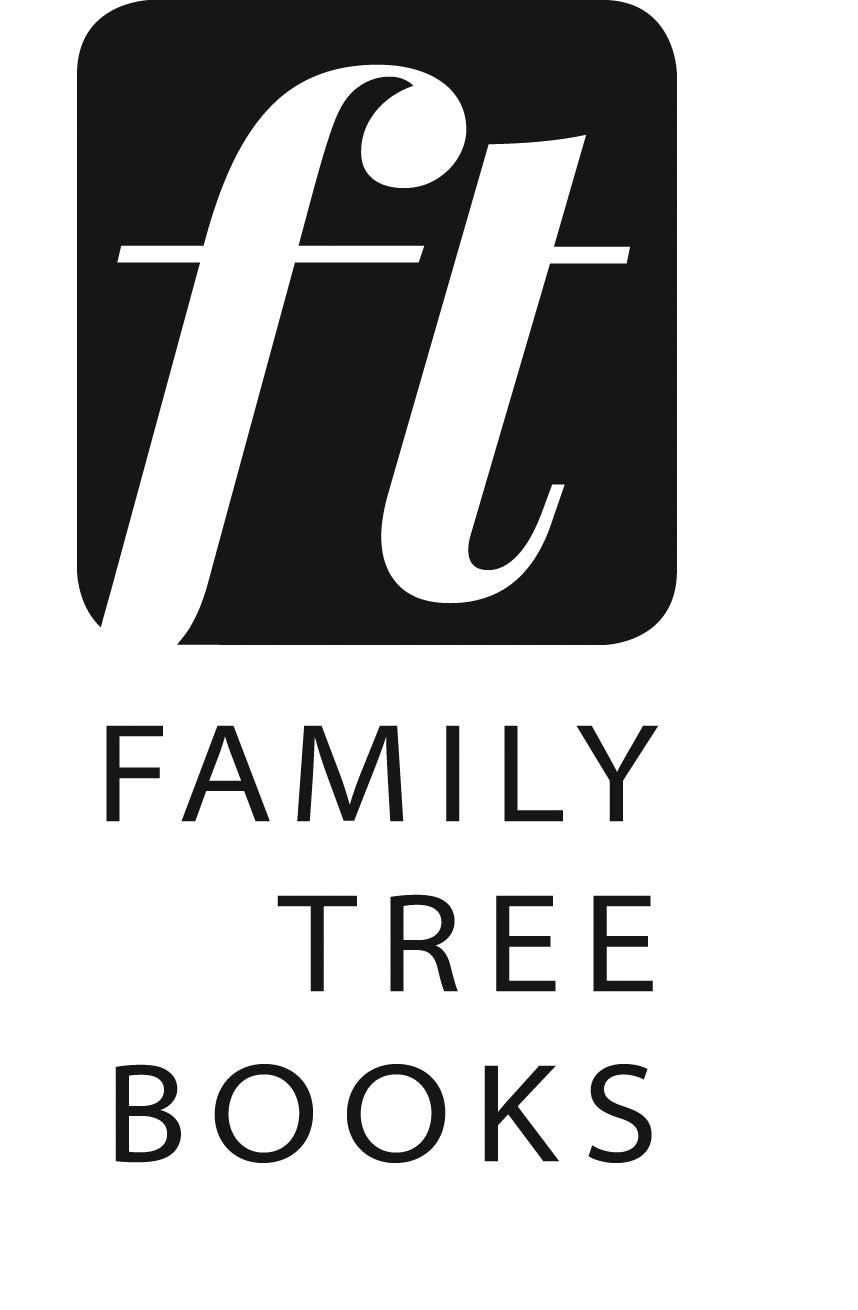
DEDICATION
To the memory of my aunt, Helen Hendrickson Hjetland. She knew all the good stories.
CONTENTS
Discover the records and collections that contain your ancestors information with this guide to how (and when) to use Ancestry.coms All Collections search form and Card Catalog.
Find your ancestors in the decennial federal censusand learn about Ancestry.coms other collections of census recordswith the information and strategies in this chapter.
Jump-start your research with this chapters step-by-step guide to Ancestry.coms collections of vital records.
Uncover your ancestors military service with this chapters guide to Ancestry.coms collections of draft cards, enlistment records, pension records, and more.
Trace your ancestors back to the old country. This chapter discusses how to find and use important immigration records, such as passenger lists and declarations of intention.
Explore decades past with Ancestry.coms collections of material published during your ancestors lifetime. This chapter discusses how to find these resources and what they can add to your genealogy research.
Learn about your ancestors everyday life with this guide to directories, tax records, land records, oral interviews, written histories, and other resources that contain details about your ancestors and their communities.
Decipher your AncestryDNA results and connect with potential matches. This chapter discusses the ever-growing AncestryDNA and how you can use DNA results in your research.
Account Info and Quick Links
Research Checklists and Worksheets
Census Abstract Forms
INTRODUCTION
Like many genealogy buffs, I found my way to family research via my grandmothers. Both spun tales that would have captivated any kid, and those stories stayed with me for decades.
One of my first genealogy memories is of ordering records from the National Archives when I was in my early teens. I was thrilled to discover that Grandmas story about her Civil War ancestor was accurate; from then on, I was hooked.
In 1986, I logged onto CompuServe, a computer network where I found my first online genealogy community. The idea of being able to instantly communicate with someone across the globeand to find even a handful of genealogy recordswas mind-boggling. Since then, Ive seen Internet genealogy grow from a tiny seed to a full-blown forest. And leading the way into that forest was first RootsWeband then Ancestry.com.
Through my work with Family Tree Magazine , I wrote extensively about Internet genealogy, including many of the properties that eventually came under the Ancestry.com umbrella, such as Fold3 and Find a Grave .
Then I wrote the Unofficial Guide to Ancestry.com , with the first edition released in 2014 and updated over the next couple of years. This workbook is meant to be used either as a stand-alone guide to Ancestry.com or as a companion to the original book.
While writing my two Ancestry.com books, I discovered much about the sites thousands of collections and how best to attack specific research problems. And by using this workbook, you can look over my shoulder as I attempt to solve real-life genealogy puzzles using Ancestry.com and its resources, then you can use the same techniques to work on your own familys history.
HOW TO USE THIS BOOK
Each chapter focuses on a specific record type or Ancestry.com resource: censuses, vital records, military records, immigration, maps, images, newspapers, publications, social history, and DNA. In each chapter, youll find:
- an overview of the collections for the record type
- exercises that illustrate common research goals and take you step-by-step through how to use Ancestry.com to complete them
- a list of search strategies to use in queries
- forms and worksheets to help you plan, develop, record, and analyze your research and data
The appendices in the back of this workbook include more tools and worksheets for you to use in your research, such as general genealogy forms and census abstract templates. For example, you can create your own step-by-step search (like the ones at the end of each chapter) using the Your Ancestry.com Search Worksheets in appendix B searches. You can download theseand all the other worksheets in this workbookfrom .
Read before you begin any of the other sections. This chapter describes how to conduct research using Ancestry.coms general search form and the Card Catalog, plus how to identify when to use each research tool. Once you understand how both approaches work, youre good to go. Its not imperative that you read the rest of the book in any particular order; just jump to the chapter that addresses the type of record you want to search.
GETTING GREAT RESULTS
Its my hope that you search along with me through the exercises. This way, youll see why I made certain search decisions, and why you might make different ones. Successful research, after all, is really about the thought process that goes into tackling a problem.
But If I could sit next to you during an Ancestry.com search, the one piece of advice Id offer is to be a flexible thinker. Genealogy information has a habit of finding its way into strange and wondrous places. What you think youll find in one record magically pops up somewhere else.
Be open to possibilities and think laterally. For me, that means isolating one individual and conjuring up every possible record or document where he might appear: school yearbooks, newspapers, estate sales, state censuses, employee records, property taxes, county histories, and so forth.
In addition, Id encourage you to realize how much information can be hiding in plain sight on a document or how much a record type might have changed over time. For example: If you cant find a marriage record, did you check the census? Some census records show whether the person was married within the year; others actually indicate the number of years a couple has been married. Or if youve ever wondered why a young family member wasnt living with his parents, check the probate files. Its possible he was an orphan and now living under the care of an uncle or another family member.
One way to think about your search strategy is this: If someone two hundred years in the future were trying to track you down, where would they look? What records have you left behind that a researcher could seek out? The more a researcher understands about an ancestors life, the better equipped he or she is to coax that relative out of hiding.
As you research your own family, its my hope that the exercises and search strategies youll find here will help you break down long-time brick walls or newly found challenges.
As Ancestry.com continues to acquire more genealogy services and digitize millions more records, it cements its continued role as must-use resource for researchers. And whether you use it for a month or for years, I wish you happy searching!
SEARCH AND THE CARD CATALOG
Ancestry.com has made searching for ancestors super simple. With fill-in-the-blank forms for major categories of records like immigration, military, and birth, you can easily go directly to the category of records you need and begin your search. But theres also a second way of finding your ancestors: the Card Catalog. Its less used than the standard search function, but it can be far more effective in many instances.

